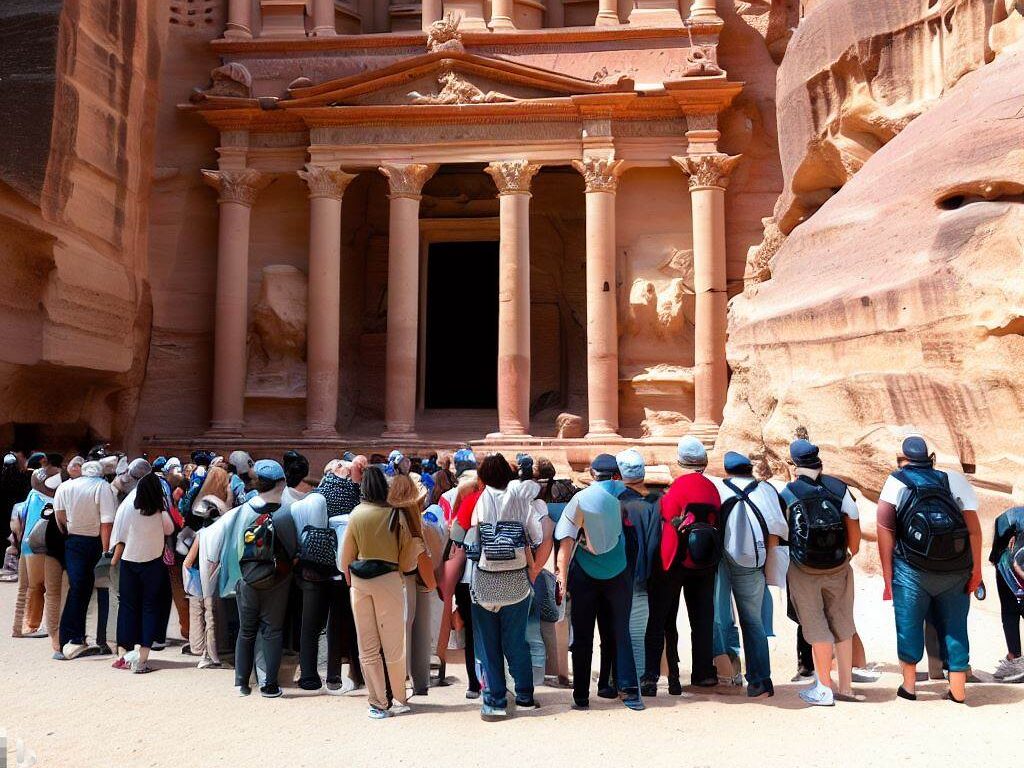Top 20 Facts about The Petra Treasury

20 fascinating facts about the Petra treasury, one of the most remarkable architectural feats of ancient Jordan. From the treasuries’ construction and historical significance to their unique features and mysteries, this article covers a range of interesting tidbits that will deepen your understanding and appreciation of these awe-inspiring structures. Whether you’re a history buff, an architecture enthusiast, or simply curious about the world, these facts are sure to intrigue you and leave you wanting to learn more about the wonders of ancient Petra, Jordan:
- The Petra Treasury is an iconic archaeological site located in the ancient city of Petra, Jordan. It is one of the most famous and recognizable structures in Petra.
- The Treasury gets its name from the belief that the urn at the top of the facade contains hidden treasure, although it was actually built as a tomb.
- The Treasury was constructed by the Nabataeans, an ancient Arab civilization, around the 1st century AD.
- The facade of the Treasury is carved directly into the rose-red sandstone cliffs of Petra, showcasing remarkable craftsmanship and architectural details.
- The Treasury stands at approximately 39 meters (128 feet) tall, with the measuring about 25 meters (82 feet) wide.
- It is believed that the Treasury was built for a Nabataean king, although its exact purpose and the person buried within it remain unknown.

- The Treasury features a mix of architectural styles, combining Hellenistic, Eastern, and classical Nabataean elements.
- The intricate carvings on the Treasury depict various mythological and historical scenes, including figures such as gods, goddesses, and warriors.
- The Treasury’s facade is adorned with beautiful Corinthian columns, friezes, and decorative motifs.
- The Treasury gained international recognition when it was featured in the movie “Indiana Jones and the Last Crusade” as the fictional “Canyon of the Crescent Moon.”
- The Treasury is a major attraction in Petra, drawing numerous tourists who marvel at its grandeur and unique beauty.
- The Treasury’s location within Petra was strategically chosen, as it marks the entrance to the ancient city and serves as a grand welcoming sight for visitors.
- The Treasury is part of a larger archaeological complex, and there are various other fascinating structures and tombs to explore in the surrounding area of Petra.
- The Treasury remained hidden from the Western world until it was rediscovered by Swiss explorer Johann Ludwig Burckhardt in 1812.
- The Treasury’s facade has undergone restoration and conservation efforts to preserve its structural integrity and protect it from weathering and erosion.
- In 2016, a hidden room was discovered beneath the Treasury using ground-penetrating radar, raising speculation about the potential presence of additional chambers or treasures.

- The Treasury’s location in the rugged sandstone cliffs of Petra provides a natural defense against erosion and weathering.
- The Treasury is illuminated by the warm hues of the rising and setting sun, creating a breathtaking sight and enhancing its visual appeal.
- The Treasury is a UNESCO World Heritage Site and has been listed as one of the New Seven Wonders of the World.
- The Treasury serves as a symbol of the fascinating ancient Nabataean civilization and stands as a testament to their architectural and artistic achievements.












